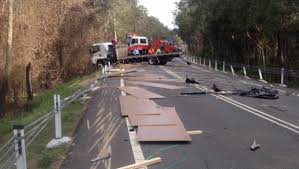
North Goonyella Mine Fire Mines Inspectors Recommendations 3rd September to 23rd October.
Inspector Recommendations Only NG 3 Sept to 23 Oct
I have collated whenever Mines Inspectors have used the word “Recommend” or “Recommendation” in a Mine Record Entry between the 3rd September and 23rd of October 2018.
This is until the MRE of the 24th October where Inspector Marlborough made his 27 point “Recommendation” that should have been a S 168 Directive.
I have included the S 167 Directive of Inspector Nugent as well as a reference point, for anyone interested enough to compare the frequency and content of anything the Mines Inspectors “Recommend” or make a “Recommendation”, before and after the Fire and Explosion.
There is a very real, practical and obvious reason why the Mines Inspectors do not have the ability to force the SSE and Management to take action from a Recommendation.
If they require the SSE to undertake action that is enforceable they need to issue a Directive.
3rd SEPTEMBER
Mr Romanski stated that Underground power had been shut off as per Inspector Marlborough’s recommendation.
6th SEPTEMBER
A risk assessment was to be conducted for the controlled re-entry to the Mine. ISHR Mr Stephen Woods had been invited to participate and would do so. The staged re-entry would commence with inspecting the Mine and conducting weekly stats on gas monitors and electrical system, as well as work necessary to ensure the safety of the Mine. Other details of planned work was included in the staged re-entry plan. I recommended that the Mine consider triggers that would be used during the re-entry process such that, should conditions worsen in the LW9 North, then the Mine would reassess and possibly withdraw people if deemed necessary; o
A large Floxal unit from NSW was expected to arrive on Friday afternoon.
I suggested that the best location to utilise this unit was to inject the Floxal gas at hole 1991. This would assist in purging the entire TG corner of the goaf area and would be more likely to treat the area where the heating was believed to be located. The Mine agreed that this would be the preferred location for this unit. It was expected to be commissioned and running Saturday morning;
A risk assessment was to be conducted for drilling a hole from the surface into the area where the Heating was thought to be located. This could then be used to inject Floxal gas and possibly to utilise this in conjunction with foam to assist in the treating of the heating. It would take 3 to 4 days to drill the hole once drilling commenced(400 m depth). I recommended that the Mine considered having an ERZ Controller, or another person competent to monitor for gas, present at the drill site to monitor for gases when the drill was expected to hole into the goaf.
8TH SEPTEMBER
It was explained that the Mine is running under TARP 7 (sealed Goaf TARP). This was an outcome of the Risk Assessment conducted for the re-entry as being the TARP nearest to the cunent situation. It was decided to utilise this TARP rather than develop a new TARP. There are parts of the TARP that are not relevant as the goof is not sealed but the TARP allows for essential work to be conducted underground when in code Red with the Mine Manager’ s permission. The Mine had decided that whenever the gas reached the code red trigger all non-essential work and the associated persons would be brought to the surface. I advised the Mine that they should consider establishing a list of what was considered to be essential work to avoid confusion. I also recommended that essential work should be that needed for the safety of the Mine and should include establishing pumping
15th SEPTEMBER
Bag samples taken from MG Seals 3-8 CT. All results showing Low Oxygen and elevated Nitrogen and no CO;
Current Status;-
Gas readings for the previous 24 hours were provided and discussed.
Tube 24 Stable and inert;
Tube 29 showed a slight increase in CO in the TG Chute Road. The CO now, according to the Gas Chromatograph in the TG Chute Road was 470 PPM, an increase of 20 PPM from the same time yesterday;
There was an issue with one of the Floxal units feeding the MG 3 CT. This was down for 4 hours during the night;
Repaired the leak in the Floxal pipe in the MG which meant no Floxal gas was injected into 3 CT for 1 hour;
Tube 28 reflects the results shown in the TG Chute Road. However, there is still a significant difference in CO make when calculated between tube 28 and 29. This indicates there is a significant error in the ventilation quantity being used at one of these points. This should be investigated by the Mine.
We had further discussions regarding the Option B (closing off TG Chute Road and ventilating face with an auxiliary fan). I stressed that the Mine must validate the ventilation model as it was not representative of the situation underground. There were obvious errors in what the model was assuming were air quantities at the current time,
Copies of the current gas data spreadsheets, an update summary and a plan showing the injection points being used and the quantities of inert gas being injected were provided.
I suggested that the Mine should consider focussing on the Tube Bundle results rather than the GC results at this stage, as there is less variation with the Tube Bundle. There are variations depending on whether the Mine uses the SIMTARS GC or the Mine’s GC, different operators and quality of bag sample taking is showing variations in the GC results that are not apparent in the Tube Bundle. The GC results are useful for other gases such as Ethylene and Hydrogen etc.
Mr Brady showed a graph that demonstrated that the accuracy of the Tube Bundle Analyser compared to the GC for CO is very good.
I also recommended that the Mine should take some pressure readings across the MG Goaf seals from 3 to 12 CT to gain an understanding of the pressures across the Goaf.
16th SEPTEMBER
I recommended that the Mine needs to take additional time when drilling new holes to ensure that the holes get closer to the coal seam. There is a possibility that a lot of the inert gas being injected into the new goaf holes is filling cracks and joints etc high up above the seam and is not getting closer to the seam where it is needed. This is supported by reports from the new hole 2693 stating that when the Floxal was introduced, there was back pressure on the hole. This could be from the Floxal gas from the other units. I recommended that the holes should be drilled to between 30 and 50 m above the seam. Discussions with the Drill Supervisor revealed that this could be achieved.
We had further discussions regarding future options should the inertisation plan not prove successful. Copies of the current gas data spreadsheets, an update summary and a plan showing the injection points being used and the quantities of inert gas being injected were provided,
17th SEPTEMBER
Inspector Marlborough had yesterday recommended that the Mine needs to take additional time when drilling new holes to ensure that the holes get closer to the coal seam. He explained that there is a possibility that a lot of the inert gas being injected into the new goaf holes is filling cracks and joints. The Mine are attempting to achieve this aim.
19th SEPTEMBER
Comments from the Group were as follows
The meeting discussed the explosibility risk and potentially unknown explosibility environments from TB 29 to and around the heating event.
The Inspectors referred NGC management team to QMRS explosibility guidelines and re-entry procedures as a reference.
The NGC management team acknowledged the sealing management plan will need to be reviewed and submitted to DNRME also the need to redevelop of sealing TARP (7) to review triggers and actions, to include explosibility.
The status of incombustibles in and around Longwall should be understood from mine data as part of the re-entry risk assessment process when re-entry becomes an option.
It was recommended that a TARP process for managing risk to surface workers which could be impacted by an explosion underground should be given consideration.
27 SEPTEMBER
S 167 Directive issued verbally by Inspector Geoff Nugent on 27/09/2018
‘Due to the unstable and volatile conditions of fire and explosion risk in the underground environment of North Goonyella Coal Mine and its unpredictable potential to impact any people in all surface areas of the operation both from the risk of an explosion and toxic or irrespirable atmospheres, I Geoff Nugent Inspector of Mines am issuing the SSE of North Goonyella Coal Mine a directive under s 167 of the Queensland coal mines safety and health act 1999 to suspend all operations within the exclusion zones established today to remove persons from these until an acceptable level of risk is achieved’
5th OCT
There was further discussion regarding the air quantity coming out of Shaft H9 and how this could be measured, or estimated. This would give valuable information to help understanding the status of the Mine, There was discussion around possible sources of additional Methane. It was suggested that the gas risers be checked and the flows measured. The Mine explained that the gas risers had been turned off on the surface.
I recommended that the Mine reconsider this with a view to opening up the risers. The hazard being that, by closing the gas risers, the boreholes would pressurise from the underground methane standpipes. This pressurised gas could then cause the underground water traps to blow out. This would result in the in seam gas drainage holes free venting into the underground mine atmosphere. The Mine agreed to review this.
7TH OCT
Marlborough
I questioned why a re-sample was not taken during the night instead of waiting to the following day before investigating. I recommended that the Mine should ensure that, whenever a suspect or very unusual gas result is identified, it should be automatic that a re-sample is taken to verify the reading.
I also recommended that the Mine consider putting the gas results out in an excel spreadsheet with Tabs for each sample point rather than simply sending the Ezgas print out sheets. This enables the people receiving the results to easily look at how results are trending and how they compare to previous samples. It would also reduce the number of e-mails being sent out
10Th OCTOBER
It was explained that the strategy was founded on not pushing methane out over the heating. Les Marlborough stated that with 25% Methane at H9 shaft the methane was already being flushed out of the goaf. Mr Romanski stated that he did not want to inject Floxal gas with 3% oxygen into the goaf area. Les Marlborough explained that the Floxal units can be adjusted so that the flow from the unit is reduced and the oxygen content is lowered to between 1 and 2%. Les Marlborough stated that, as part of the Mine Record Entry from today there would be a recommendation for the Mine to review the Floxal strategy.
Les Marlborough asked about how well developed the Mine medium and longer term strategy has been developed — Mike Carter undertook to give details after the meeting


